Hibiscus plants are native to tropical areas worldwide. They enjoy a warm, sunny and humid environment. Some varieties are sensitive to cold weather, while some can endure it. But it will not react well if exposed to very high or low temperatures.
So, in this article, we shall learn about the temperature tolerance of a hibiscus plant.
The ideal temperature for Hibiscus is between 60°F-85°F. Though they can endure a wide range of temperatures, they cannot tolerate temperatures below 50°F or above 95°F. It would be best to protect all the varieties from high temperatures and the tender varieties from cold weather.
Especially in the winters, some tender varieties can become weak and die. If you want to grow Hibiscus but are concerned about their temperature tolerance and hardiness zones, this guide will help you know about it.
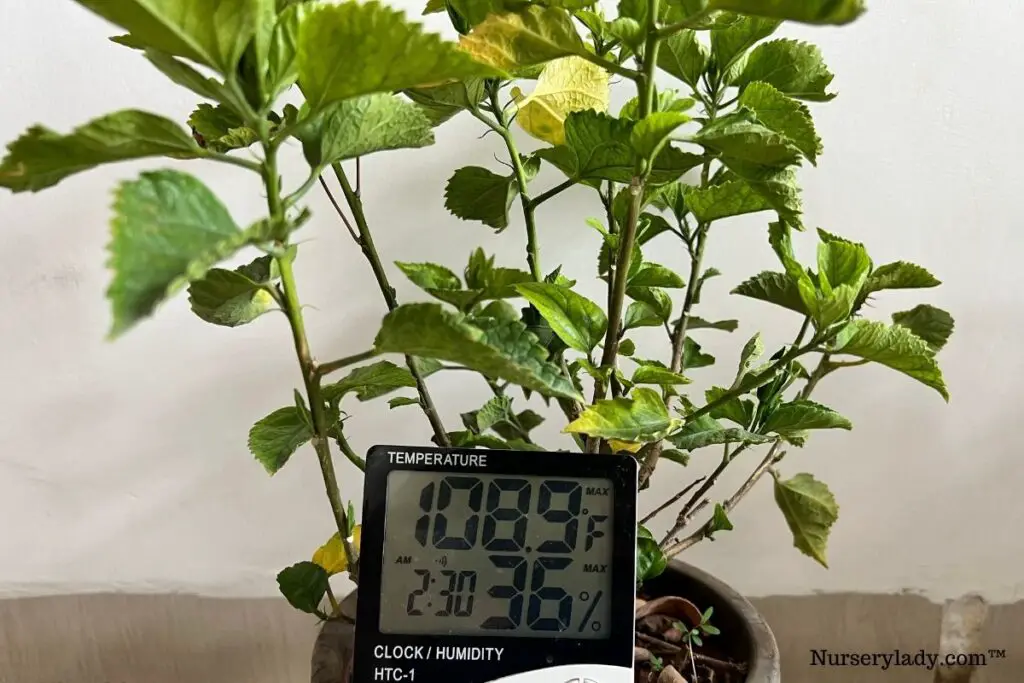
What is the ideal temperature for Hibiscus plants?
The best temperature for the Hibiscus plant ranges between 60°F and 85°F.
The warm temperature will encourage the plant to grow ideally and flower profusely.
The Tropical Hibiscus must have this temperature most of the time for busy growth.
In the winters, the ideal temperature for Hibiscus should remain within 55°F to 60°F.
The minimum level should be 50°F for the Tropical Hibiscus plants.
However, that is not the case with the Hardy Hibiscus plants.
They can tolerate up to -20°F to -30°F.
If the temperature drops below 50°F, the tropical plants will get dormant and lose leaves.
The Hardy Hibiscus, too, will become dormant once the winter strikes your area.
If you live in a colder climate, you can grow Tropical Hibiscus outside.
You should bring it inside before the nighttime temperature drops below 50°F.
But, in warmer climates, your Tropical Hibiscus can stay outside.
On the other hand, you don’t have to bring Hardy Hibiscus inside because they can tolerate cold weather.
The plant enjoys warm temperatures doesn’t mean it will stay fine at extremely high temperatures.
In the summers, the ideal temperature should remain within 60°F to 75°F.
The maximum range should be 85°F to 90°F.
How hot is too hot for the Hibiscus plants?
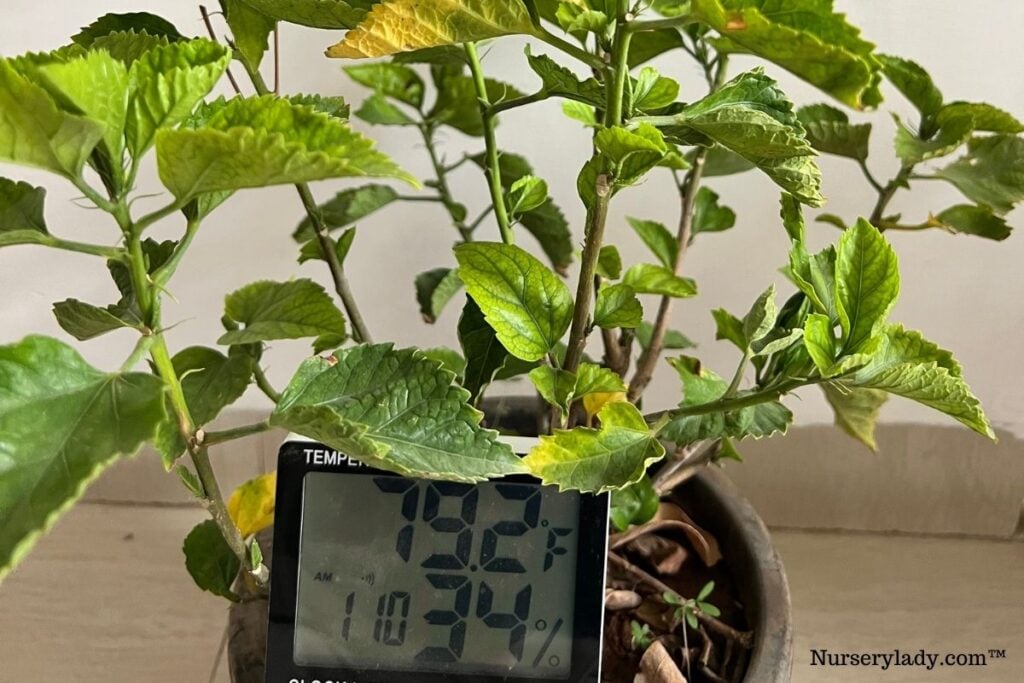
Indeed Hibiscus enjoys warm and sunny temperatures since they are native to a wide range of tropical regions.
But the warm temperature will only be good for the plant if the temperature remains within 60°F-85°F.
The maximum range is 90°F.
If the temperature rises above 95°F, it will harm the Hibiscus plants.
However, the plant can survive high temperatures up to 115°F.
But, they will have to protect them when the temperature exceeds 90°F-95°F.
At such extreme temperatures, the plant will show signs like:
- Leaves turning yellow
- Flower buds turn yellow and drop off before flowering.
- No blooming due to bud drop
- Outdoor potted plants and the roots will get overheated and burn.
- Leaves cupping
- Orange-colored Hibiscus develops yellow spots at the center and edges. The plant releases carotenoids to protect itself from the hot sun.
How should I care for the Hibiscus in high temperatures?
When the temperature exceeds 95°F, increase the watering frequency.
- You might need to water the plant daily. Sometimes, they will need watering 2-3 times per day. Check the soil frequently and water as per need. This will cool down the roots.
- A great way to cool the plant is to shower the plant thoroughly with a garden hose. Do this once a week.
- Fix transparent shading nets to protect them from high-intense sunlight.
- If you are growing the Hibiscus in containers, double-pot it. Put the potted plant in a cachepot or a big ceramic pot. This will give some shade to the roots and prevent overheating.
- You can also shift your potted Hibiscus to the northern or eastern side of the garden, where the sunlight will be less intense. Less amount of sunlight can reduce the plant’s temperature to some extent.
- Don’t prune the plants at such temperatures. This creates extra stress in the plant. The cut portion begins to lose moisture faster, and it becomes a way for pathogens to enter the plant.
How cold temperature affects the Hibiscus plants?
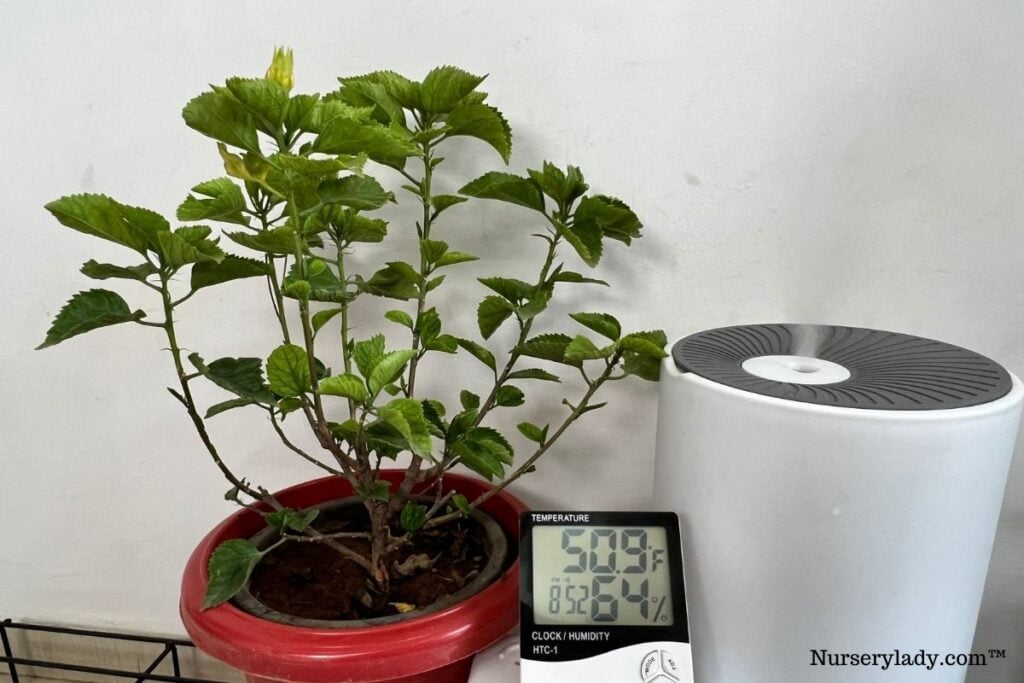
Whether the Hibiscus can withstand cold or not depends on the type.
If you have Tropical Hibiscus, they will tolerate cool winter and not harsh cold.
On the contrary, Hardy Hibiscus can grow in both warmer and colder climates since they are hardy in zones 4 to 8.
For Tropical Hibiscus, the best temperature in winters should range between 55°F and 60°F.
The minimum range should be 50°F.
They can endure temperatures of 32°F and survive 20°F because it is the minimum temperature for zone 9.
Below this range, the plant will suffer frost damage.
Hardy Hibiscus will stay fine at such temperatures, even if it goes below zero F.
Being hardy, they can tolerate temperatures around -20°F to -30°F.
When the Tropical Hibiscus plants are exposed to cold temperatures below 20°F to 32°F, they get frozen.
The signs of a frozen plant are:
- The moisture inside the leaves freeze, and the leaves develop damp black marks on the surface.
- The leaves and buds have brown edges and spots.
- Shriveled, water-soaked appearance
- A hard freeze makes the plant wilt and turn purplish brown or black.
- If Tropical Hibiscus is left outside in the freezing weather for too long, it will die.
Also read: Can Hibiscus Tolerate Cold Weather? (+Winter Care)
How should I take care of Hibiscus plants in winter?
If you grow tropical plants in colder regions, you have to take them indoors.
To overwinter the plant:
- Wash the plant, prune about 20% and then take the plant indoors.
- Reduce watering. Water the soil only when the top few inches are dry.
- Keep them close to a sunny window.
- Increase the humidity inside.
- If the plant is losing leaves, it is going dormant. Move them to a dark place and don’t fertilize.
- Wherever you place the plant, the temperature of that place should not drop below 55°F.
- Take the plant out when the temperature rises to 60°F, and new growth appears.
If you are growing Tropical Hibiscus in a warmer zone or a Hardy Hibiscus in any climate, you can leave the plant outdoors in winters.
To take care of the plant outside:
- Add a thick layer of mulch around the plant base to trap the warmth and moisture and prevent the cold from reaching the roots.
- Cover the plant in the evening with a frost cloth. You can also add small lights inside the cloth to warm up the plant.
- During the day, let them have enough sunlight for warmth.
- Outside, the plant will go dormant due to the cold. At that time, don’t fertilize it. Again start fertilizing in the early spring when the temperature rises. It is time to wake up the plant from dormancy.
- If the plant has received any cold injury, don’t take steps immediately. Wait until the risk of frost is over. After that, prune off the dead parts of the plant.
- Don’t worry if the Hardy Hibiscus is dying to the ground. You can again see new growth in the growing season.
Looking for gardening supplies? We have tested 100's of products before recommending them to you guys. Check out our best pick below:
| Image | Gardening Supplies | Best Price? |
|---|---|---|
 Top
Top Top
Top | Raised Garden Bed Kit | Check On Amazon |
 | XLUX Soil Moisture Meter, Plant Water Monitor, Soil Hygrometer Sensor for Gardening, Farming, Indoor and Outdoor Plants, No Batteries Required | No Results |
 Top
Top Top
Top | 82 Pcs Garden Tools Set and Extra Succulent Tools Set | Check On Amazon |
 | Joeys Garden Expandable Garden Hose with 8 Function Hose Nozzle, Lightweight Anti-Kink Flexible Garden Hoses, Extra Strength Fabric with Double Latex Core, (50 FT, Black) | No Results |
 Top
Top Top
Top | Dual Chamber Compost Tumbler | Check On Amazon |
 Top
Top Top
Top | Sunnyglade Plant Stakes | Check On Amazon |
 Top
Top Top
Top | Organic Cold Pressed Neem Seed Oil | Check On Amazon |
 Top
Top Top
Top | Mighty Mint Gallon :-Insect and Pest Control Peppermint Oil | Check On Amazon |
 Top
Top Top
Top | Scotts DiseaseEx Lawn Fungicide | Check On Amazon |
 Top
Top Top
Top | Jacks Classic 20-20-20 All Purpose Fertilizer | Check On Amazon |
 Top
Top Top
Top | 30,000 Seeds Pollinator Attracting Wildflower Mixture | Check On Amazon |
 Top
Top Top
Top | Survival Vegetable Seeds Garden Kit-Over 16,000 Seeds | Check On Amazon |
Hibiscus hardiness zones
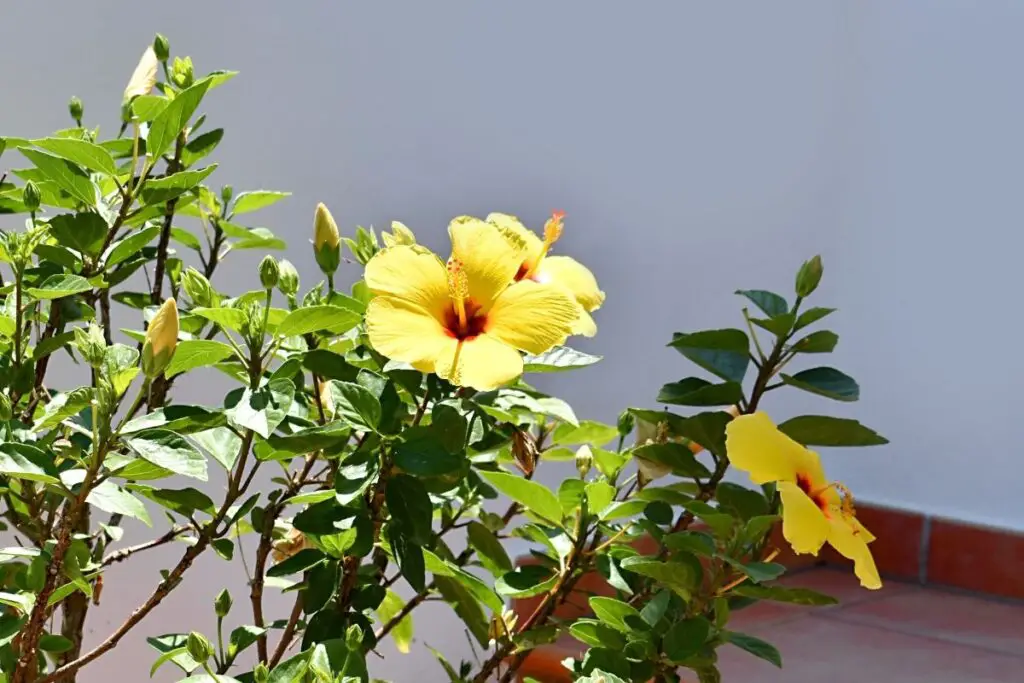
Since there are various Hibiscus plants, their hardiness zones are different depending on those varieties.
Tropical Hibiscus
These are low bush plants grown mostly in containers because they are shifted indoors in winter.
They belong to USDA hardiness zones 9 to 11, where the temperature remains warm, and the winters are mild and cool.
Hardy Hibiscus
These plants are late summer blooming plants.
They produce colorful 8 to 12-inch flowers.
They are native to USDA zones 5 to 10.
However, they are even hardy to zone 4.
Temperate Hibiscus or Rose of Sharon
Rose of Sharon is a shrub Hibiscus native to USDA zones 5 to 8.
They will even tolerate the cold of zone 4.
They also belong to the Hardy Hibiscus plants.
You can train it and make a tree out of it.
Let’s have a quick look at some Hibiscus varieties and their hardiness zones:
Hardiness Zones 4 to 9
- Rose Mallow (the hardiest Hibiscus)
- Heartthrob
- Midnight
- Bluebird 9
- Cherry Cheesecake
- Vintage Wine
- Summerfic Berry Awesome
- Cranberry Crush
- Mars Madness
- Plum Fantasy
- Summer Storm
- Old Yella
- Fantasia
Hardy Hibiscus at Zone 4 to 10
- Kopper king
- Plum crazy
- Lord Baltimore
- Lady Baltimore
- Robert Fleming
Hardiness Zone 5 to 8
- Diana
- Rose of Sharon
Zone 5 to 9
- Fireball
- Starry Starry Night
- Honeymoon Red
- Honeymoon Light Rose
- Lavender Chiffron
- Luna Pink Swirl
- Giant Lazerus
- Luna Pink Swirl
Tropical Hibiscus in zones 9 to 12
- Chinese Hibiscus or China Rose
- Red Dragon
- Eye of Kali
- El Capitolio
- Hawaiian white Hibiscus (Hibiscus Arnottianus)
- Magic Moment
- Bonjour
Which variety can be grown in which zones?
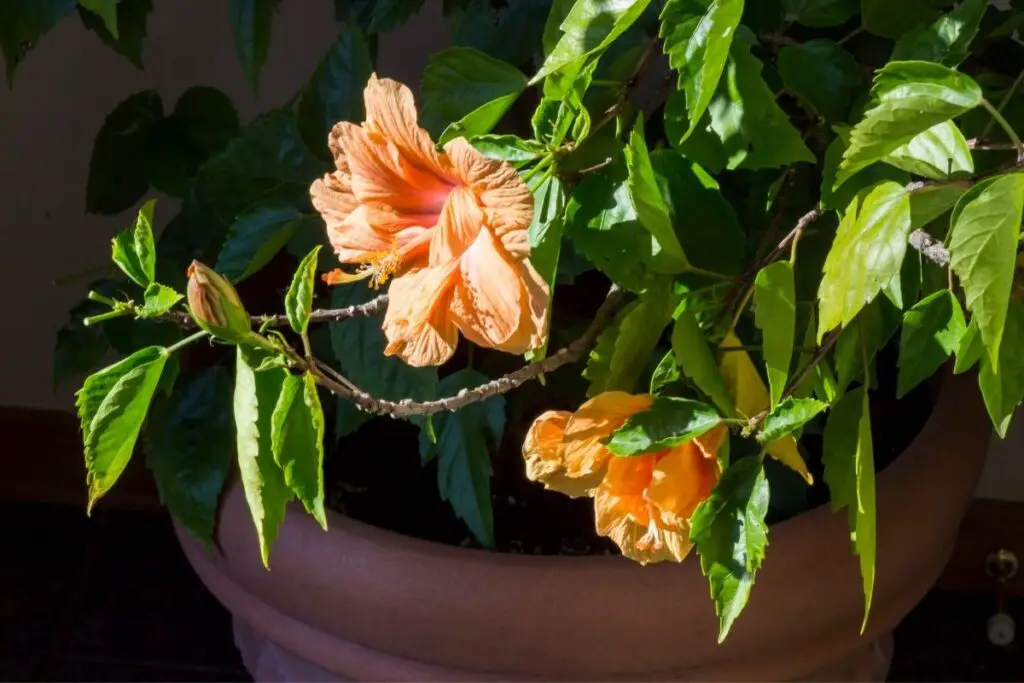
Tropical Hibiscus varieties should be grown in warmer climates, mostly in zone 10 to 12.
The weather remains throughout the year, and the winters are mild.
Some Tropical Hibiscus can also grow in zone 9, where the minimum winter temperature is 20°F.
But, the plant might require shifting indoors at night if the temperature drops below 32°F or 40°F.
Hardy Hibiscus varieties can be grown in zones, and the climate doesn’t matter.
They can be grown even in zones 10 to 12. Hardy Hibiscus plants are hardy, and zones don’t matter.
If you belong to zones 5 to 8, you should grow mostly Hardy Hibiscus.
You don’t have to worry about them in the winter season.
But, if you still insist on growing Tropical Hibiscus plants in colder zones like 4 to 9, they should be grown as annuals.
In short, Tropical Hibiscus should be grown mostly in zones 10 to 12 if you want them to enjoy the whole year.
As for the Hardy Hibiscus plants, they don’t have any problem in any zones.
If you live in colder zones like 4 to 9, you should mainly grow the Hardy Hibiscus plants.
How and where to grow?
Tropical Hibiscus
If you wish to grow Tropical Hibiscus outdoors in zones 9 to 12, follow the steps below:
- Find the sunniest spot of your garden, for example, the southern or western side of your garden.
- Check the soil drainage and permeability. Add sand to improve drainage and compost to improve retention and nutrition.
- Dig a hole in the soil bed. Make the hole the size of the root.
- Now, plant the Hibiscus and cover the roots and sides with the soil.
- Tap the sides gently and water thoroughly.
For growing them in containers:
- Choose a container with drainage holes.
- Add half of the pot with the ideal soil mix, for example, 2 parts soil, 1 part sand, and 1 part compost. (Follow the soil article for other soil mixes).
- Then dig a hole at the same depth as the Hibiscus root and plant it.
- Cover the sides with the remaining potting mix and tap the sides.
- Water the plant deeply until the excess drains out of the drainage holes.
Also read: What Kind Of Pot Is Best For Hibiscus? (Size, Material & More)
Care tips:
- Make sure they receive daily 6 to 8 hours of sunlight.
- If the summer is too heated, shower the plants weekly and shade them with shading nets.
- If they are in containers, double-pot them.
- Water regularly during the summers and reduce it in winters.
- Fertilize throughout the spring and summer. Reduce in autumn and stop in winter if dormant.
- If you have planted them in zone 9, grow them in containers to bring them inside in winters. Zone 9 can receive frost in winter as its average winter temperature is 20°F. So, if they are in the ground, add a thick layer of mulch and cover them with frost cloth.
- Make sure they receive sunlight in winter throughout the day.
- Grow Hibiscus in pots and bring them inside in winters if you live in colder regions. Increase the humidity inside, and the temperature should not drop below 55°F.
- Grow them as annuals if you wish to have them in zones between 4 and 9 because they won’t survive such cold weather.
Hardy Hibiscus
You can grow Hardy Hibiscus in any zone since they can tolerate warm and cold temperatures.
Growing and planting methods are the same as Tropical Hibiscus.
The difference is in the soil.
Hardy Hibiscus can grow in swampy and wet soil.
To take care of Hardy Hibiscus in their ideal zones and other zones:
- Ensure they receive enough sunlight for 6 to 8 hours the whole year. This will help them to get warmth in winter.
- Protect them if the temperature exceeds 95°F.
- Water them regularly in summers and less in winters.
- Fertilize in the growing season.
- In the winter, you don’t need to bring them inside. Just mulch them and cover them with frost cloths.
Also read: Where To Keep Hibiscus Plants? (Ideal Spot+Tips)
Final thoughts
The ideal temperature for Hibiscus is between 60°F and 85°F. Though they enjoy warm temperatures, they should not go beyond 90°F. Otherwise, the plant will drop leaves and flower buds.
Tropical Hibiscus plants are highly suitable for warmer climates in zones 9-12. The minimum should be 40-50°F. If you grow them in colder zones, grow them as annuals.
Hardy Hibiscus can be grown in any zones from 4 to 12. They will grow well at ideal warm temperatures and even endure temperatures around -20°F.
Reference: Wikipedia, ASPCA, Louisiana State University Agricultural Center, American Society for Horticultural Science, Tropical Hibiscus by Texas A&M University, Sciencedirect.

Hi: I brought my Hibiscus in when it got cold. I’m in Kansas and it gets into the 20’s or below.
I’ve had it in the house since November and no problems until lately. I have little white spots all over it and I know that is some kind of bug. I’ve sprayed with Sevin and I can’t seem to get rid of them. It just had one great big bloom open. I have several more buds coming.
Any suggestions?
Thank you so much.
Hello karen,
The white spots suggest a pest infestation, likely whiteflies or mealybugs. Sevin may not be effective on these pests. Instead, try using insecticidal soap or neem oil, which are better suited for treating these types of insects. Apply according to the product instructions, typically every 7-10 days until the pests are gone. Also, isolate the affected plant to prevent the pests from spreading to other indoor plants. Regularly check and clean the leaves, and prune any heavily infested areas to help control the outbreak.
Hope it helps!